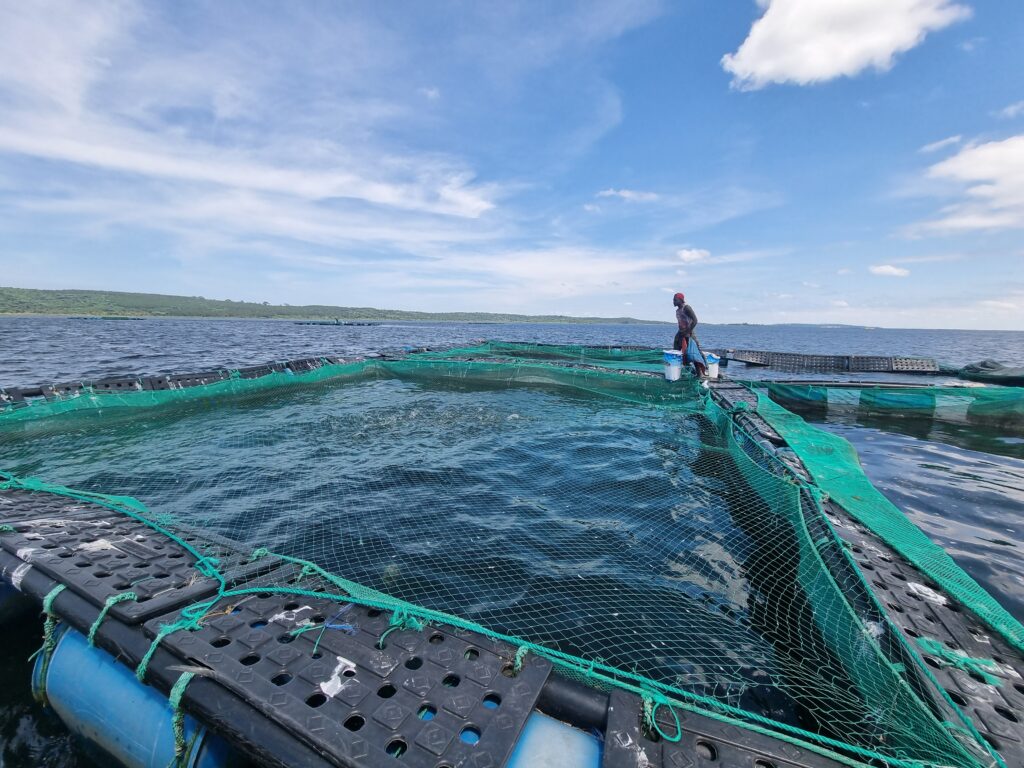When aquaculture farmers across Africa talk about their greatest challenges, the same issues often rise to the top: feed costs, access to quality seed, infrastructure, and market stability. Yet, an equally critical factor, and one that too often gets overlooked until it’s too late is biosecurity and disease preparedness.
According to the Food and Agriculture Organization (FAO), disease outbreaks are among the greatest threats to aquaculture viability worldwide, capable of wiping out entire production cycles and causing devastating financial losses for farmers and investors alike (FAO, 2021). For Africa’s young and growing aquaculture sector, prioritising biosecurity is not optional – it is essential.
Why Biosecurity Matters
The economic cost of aquatic animal diseases is staggering. Globally, fish disease is estimated to cost the aquaculture industry over USD 6 billion annually (World Bank, 2020). For African farms, the risks are compounded by limited veterinary infrastructure, inconsistent regulation, and gaps in farmer training.
Beyond economics, outbreaks undermine food security, erode consumer trust, and can push smallholder farmers out of business entirely.
Common Weak Points on African Farms
From our field experience at ACMS, combined with insights from regional practitioners, we see a few recurring weak points where disease risk often enters or spreads:
- Stock movement: Poor quarantine or sourcing practices can introduce pathogens.
- Water sources: Untreated or shared water bodies increase exposure.
- Equipment hygiene: Nets, boats, and grading gear often move between cages or farms without disinfection.
- Limited diagnostics: Farmers may not recognise early signs of disease, delaying response.
These weaknesses are not about lack of care but rather, symptoms of operating without the right tools, training, and systems in place.
Practical, Low-Cost Protocols That Work
The good news is that biosecurity doesn’t always mean expensive technology. Simple, consistent measures can prevent most outbreaks:
- Quarantine: Always isolate new stock before introduction.
- Entry protocols: Disinfect equipment, boots, and hands before entering production areas.
- Routine checks: Train staff to log mortalities, behaviour changes, and growth anomalies daily.
- Water quality monitoring: Regular checks for oxygen, temperature, and ammonia to prevent stress that predisposes fish to disease.
- Basic diagnostics: Even simple field kits can flag bacterial or parasitic issues before they escalate.
At ACMS, we’ve seen farms more than double survival rates simply by embedding these practices into daily routines.
Case Example: Lessons from the Field
One of our partner farms in East Africa once faced mortality rates of nearly 40% during peak seasons. Through targeted mentorship (introducing strict cage hygiene, water monitoring, and a clear quarantine process) losses dropped to under 10% within two production cycles. Beyond survival, the farm saw significant financial relief, moving from crisis management to steady growth.
This is the power of combining knowledge with simple systems: resilience grows, and profitability follows.
African Policy Examples: Building Biosecurity Capacity
Different countries across Africa are making strides, each with lessons for the continent:
- Uganda: Introduced aquaculture guidelines under its National Fisheries Policy, including water quality standards and fish health monitoring protocols. These frameworks are helping cage farms on Lake Victoria reduce environmental and disease risks (NARO, 2022).
- Kenya: Under the Kenya Aquaculture Strategy 2021–2025, the government emphasises farmer training on pond hygiene, feed management, and biosecurity as part of its broader push to expand fish production (Kenya Ministry of Agriculture, 2021).
- Nigeria: As Africa’s top catfish producer, Nigeria has invested in aquaculture biosecurity labs and extension programs to address recurring bacterial and parasitic infections that impact smallholder ponds (FMARD, 2022).
These examples show that biosecurity isn’t only a farm-level practice – it requires national support systems, from training to testing labs, to truly safeguard the sector.
The Road Ahead
Biosecurity is not a side issue. It is a core pillar of sustainable aquaculture growth in Africa. From smallholders to large investors, proactive disease preparedness can mean the difference between collapse and resilience.
At ACMS, we believe that building better aquaculture starts with people, systems, and policy working in tandem. Farmers who adopt even modest biosecurity practices not only reduce losses but also strengthen their commercial standing with off-takers, financiers, and regulators.
Next Steps for Farmers & Partners
✉️ Would a farm biosecurity workshop benefit your farm? Get in touch with us
By treating biosecurity as the foundation rather than an afterthought, Africa’s farmers can protect their fish, their livelihoods, and their future.

